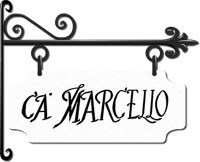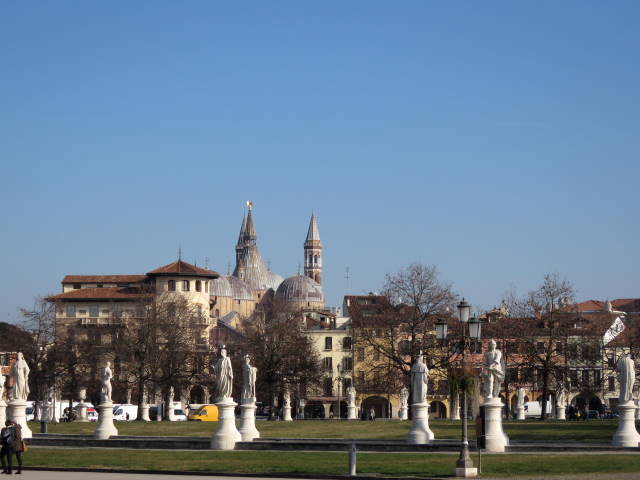Padova is all known to be a student city. There is, indeed, one of the oldest universities in Europe, where many illustrious people have studied and taught, and the first woman in Italy has graduated (Elena Lucrezia Corner or Cornaro).
Padua is part of the Padua – Riviera del Brenta – Venice axis: a visit is recommended, and in the evening a Spritz in one of the main squares is almost a must.
A suggested itinerary to visit Padova
We propose a circular itinerary that allows you to touch some of the most important points of interest of the city of Padua.
We take as a reference the multi-storey car park near Piazzale Boschetti, for those who reach the city by car (2 euros per hour). The city can be reached by train or by bus. Or you can take advantage of one of the Fair’s parking lots and take a shuttle bus that takes you to the center.
Piazzale Boschetti is close to the Eremitani museum, from where our itinerary begins.
Cappella degli Scrovegni
We start with Cappella degli Scrovegni, famous for the wonderful cycle of frescoes by Giotto painted between 1303 and 1305.
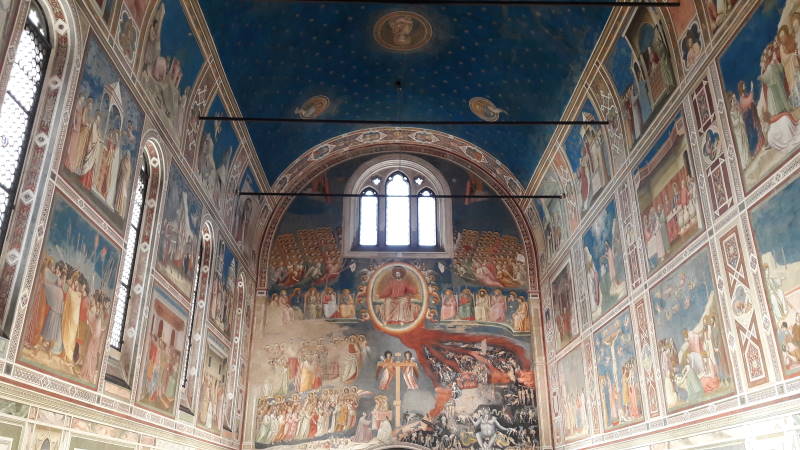
It is recommended to book a visit to the Cappella degli Scrovegni (a limited number of people can enter). You enter the museum of the Eremitani. In fact, you buy a single ticket that includes the visit of the museum which you can visit waiting to see the chapel.
The visit takes place like this: you enter and you are seated in a room where an explanatory video on the history of the Chapel and its frescoes is projected. Once inside you can only spend 15 minutes admiring Giotto’s masterpieces. The caretaker is happy to answer questions.
Curiosity: among the characters portrayed in the part of Paradise, Giotto also included Dante Alighieri (in those years present in Padua) and it seems he painted himself as well.
Towards Piazza delle Erbe and della Frutta of Padova
After the visit to the chapel we move towards the heart of the city, with its numerous squares. We reach Piazza Cavour from where we have access to Palazzo Zabarella, home to numerous exhibitions.
We approach the famous Caffè Pedrocchi.
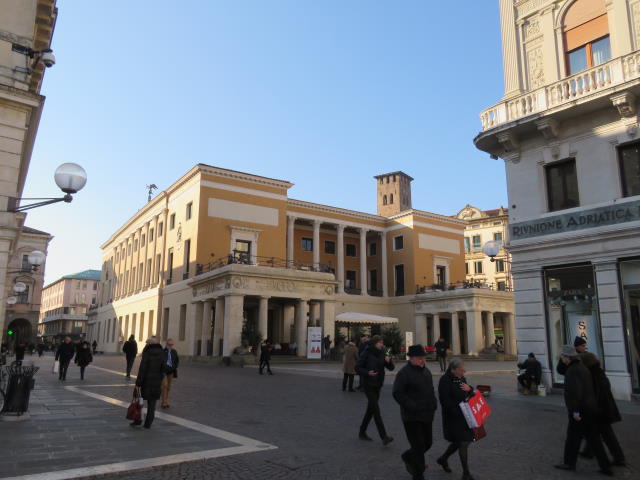
Immediately after there is the Palazzo del Bo, the university’s historic building. It is one of the oldest universities in Europe and in the past the lectures were attended by students from foreign countries. If you do not want to take a guided tour (only with reservation), you can still enter to see the ancient porticoed courtyard and loggia, adorned with coats of arms of the families of students who graduated there.

From the University building we head towards Piazza delle Erbe, recognizable by the fountain.
In Piazza delle Erbe and Piazza della Frutta there is a market every morning (except on Sunday). In the first there are food seller and in the other one you find a bit of everything.
The two squares are separated from Palazzo della Ragione, with the characteristic hull roof and houses the largest medieval hall in Europe, entirely frescoed with an astrological theme.
Here we stop under the arcades of Palazzo della Ragione to eat something in one of the many bars: the sunny day allows you to stay at one of the tables outside. There a great choice also on the other side of the piazza.

We then walk towards Piazza della Frutta also dominated by Palazzo della Ragione.
In one of the streets next to it there is a fine example of street art by Alessio B. (in Padua there are many works of this type, and on the internet you find maps of where to find them).

From Piazza della Frutta and Piazza dei Signori to the Duomo of Padova
From here you can already see the Clock Tower in Piazza dei Signori. It is the first watch in Italy, and has a particular feature: the zodiac sign of Libra is missing. There are various legends about this lack, which in fact is due to the representation of the pre-Roman zodiacal system, which considered Scorpio and Libra a single sign.
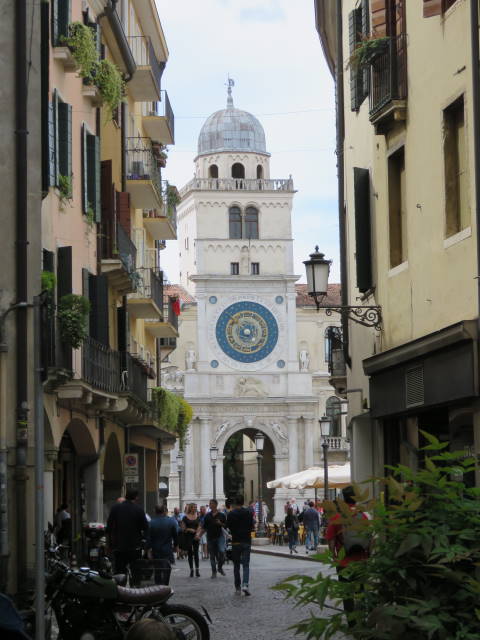
Picture taken from the Loggia della Gran Guardia, which also shows the Lion of San Marco, symbol of the dominion of the Serenissima Republic.
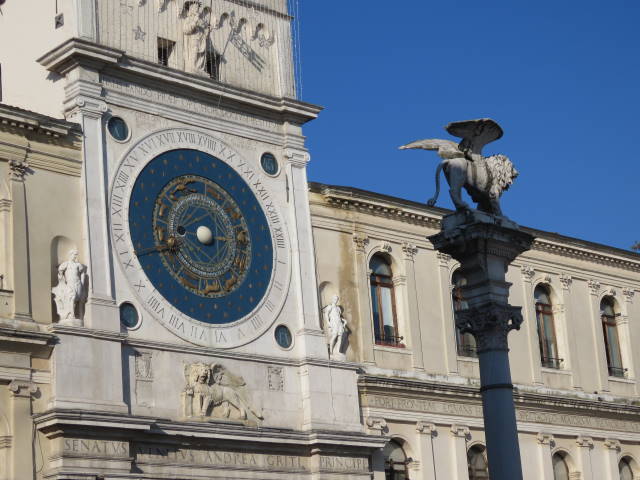
View from Piazza dei Signori towards Palazzo della Ragione.
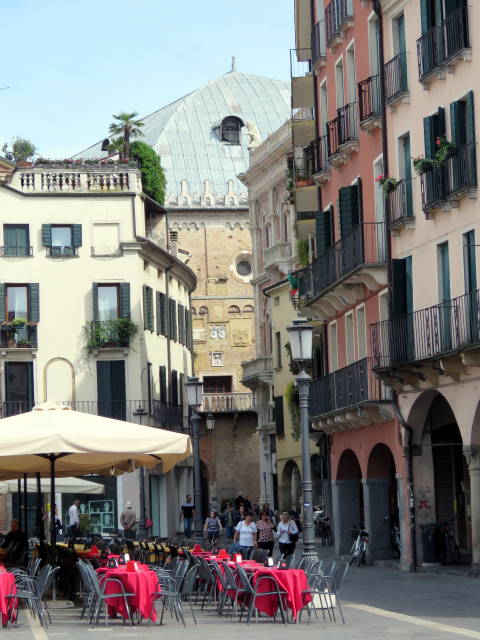
We continue our visit by turning to the left of the clock to head towards the Duomo of Padua and its baptistery.
On the corner you can see another example of street art by Kenny Random.
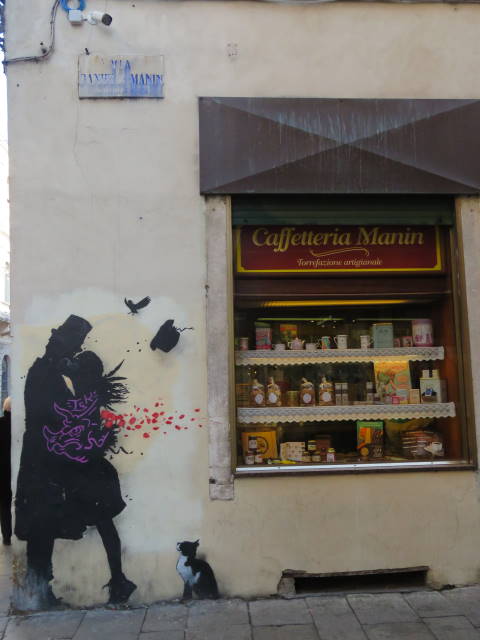
And here we are now on Piazza del Duomo. We stop to visit the beautiful baptistery (at the time of writing there are restoration works and only a part of the frescoes can be seen) which is a small jewel, often not taken into consideration by tourists.
The frescoes are the work of Giusto De’ Menabuoi. The caretaker showed me where the artist portrayed Petrarch.
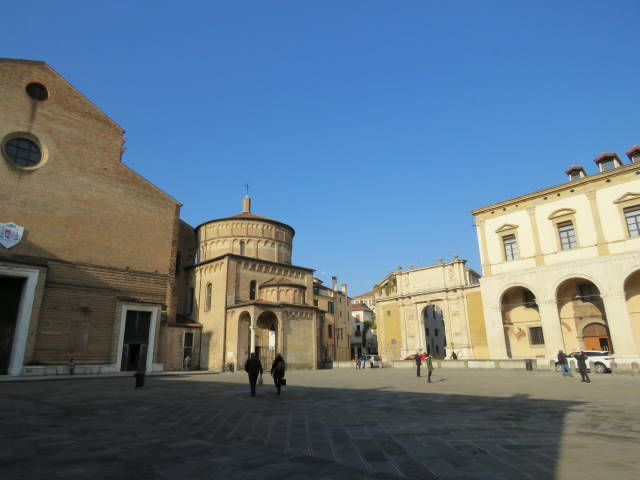
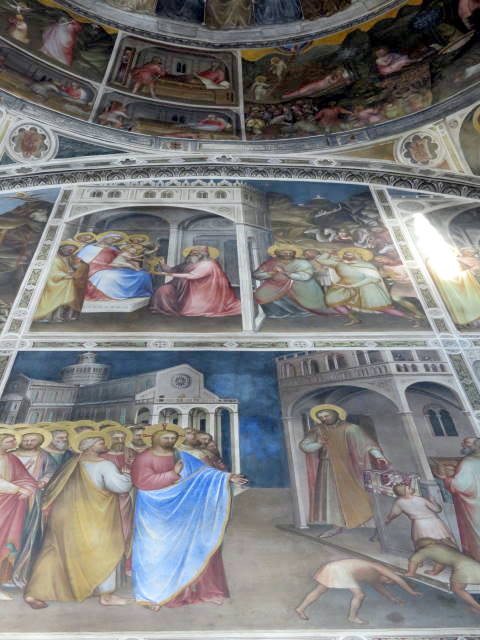
From the Duomo to Prato della Valle in Padova
Once out of the baptistery we head towards the Specola, turning left immediately after the Duomo.
We find ourselves at a bridge that we pass, and we turn left. You can see the characteristic building of the Specola, the astronomical observatory of Padua.
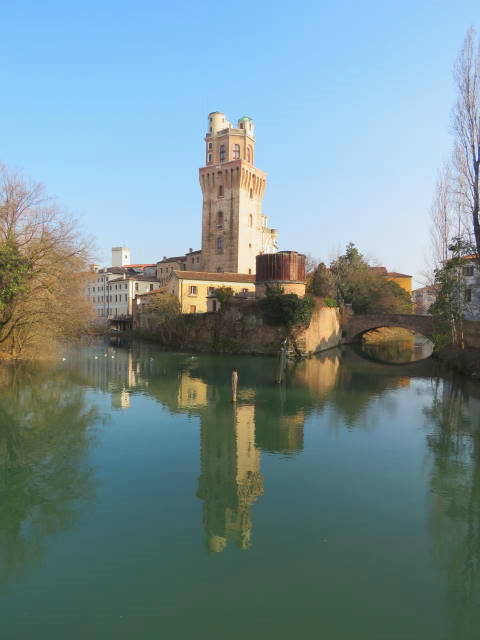
From here you reach Prato della Valle, which is believed to be the largest public square in Italy.
In one corner stands the basilica of Santa Giustina, another characteristic construction of Padua with its eight domes.
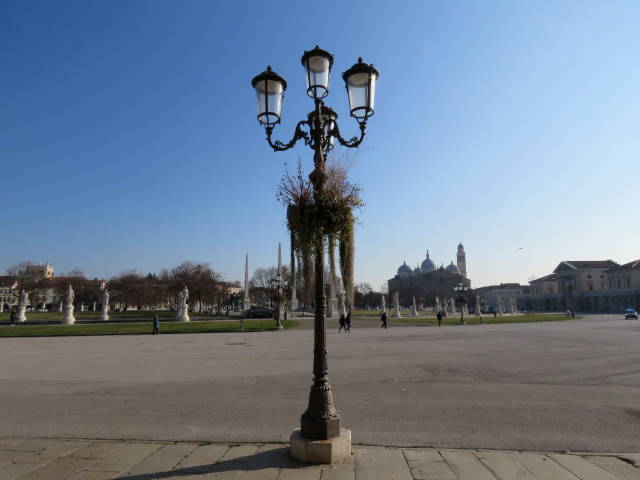
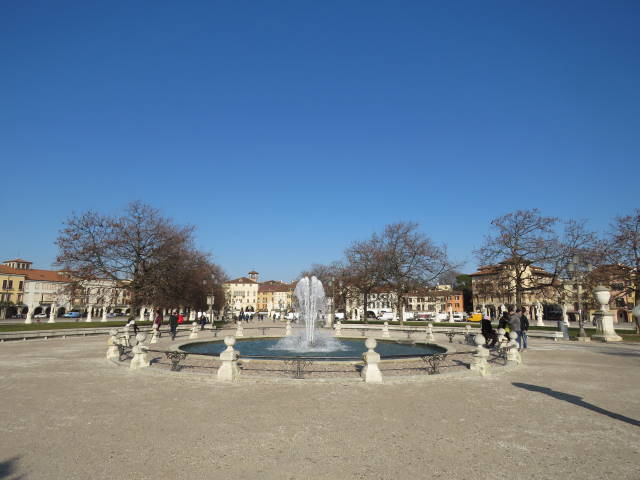
From Prato della Valle to the Santo Basilica and back to the squares of Padova
From Prato della Valle you can already see the Basilica of Sant’Antonio. But first we make a small detour to the Botanical Garden of Padua, the oldest in Europe, founded in 1545.
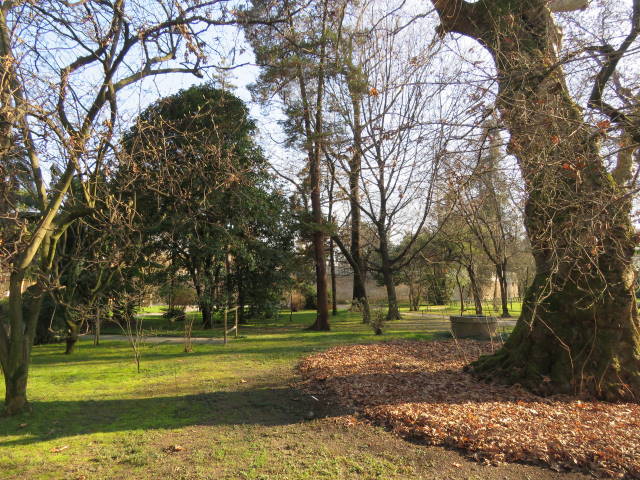
And finally our last destination, before returning to the Paduan square: the grandiose Basilica del Santo.
It is one of the most famous sanctuaries in Italy, with its the remains of Sant’Antonio.
It is characterized by a Byzantine architecture, with domes and spiers that look like minarets. The interior is very rich and in addition to the chapel of the Ark of the Saint, it houses numerous artworks.
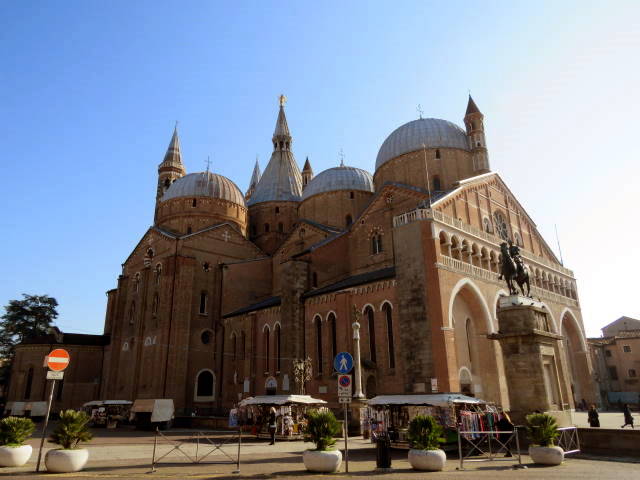
From here we take Via del Santo and immediately after Via Stampa to head towards the streets of the old Ghetto of Padua which are located in the area of Piazza delle Erbe.
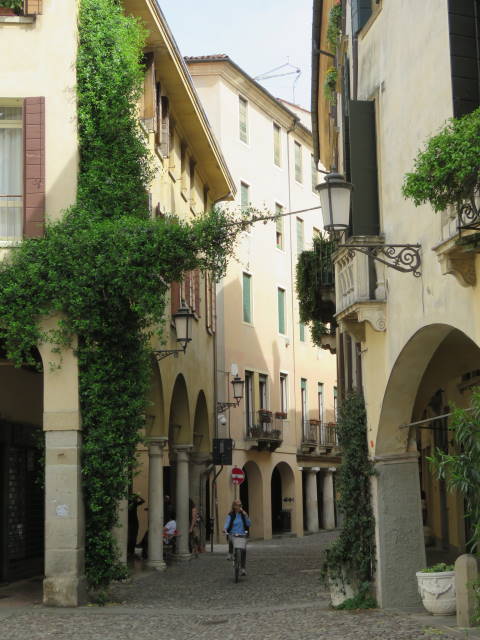
Finally we head back to the parking lot crossing the squares.
Near the parking lot it is possible to take a walk along the Piovego and reach in a few minutes Porta Portello. It is where arrived the boats from Venice, taking the way along the Brenta Riviera an reaching Padova.
Those shots have been taken in autumn.
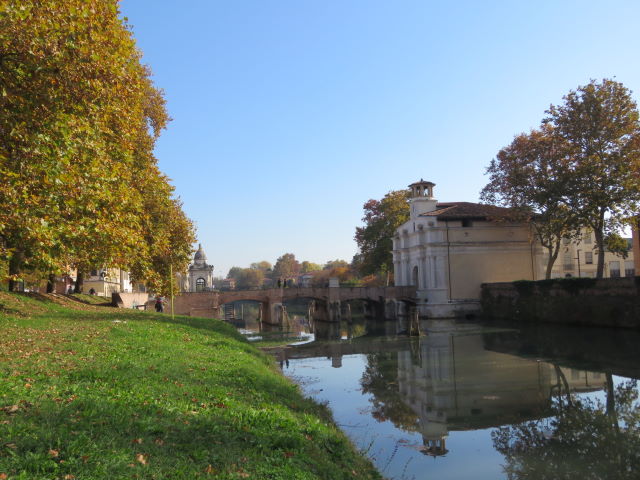
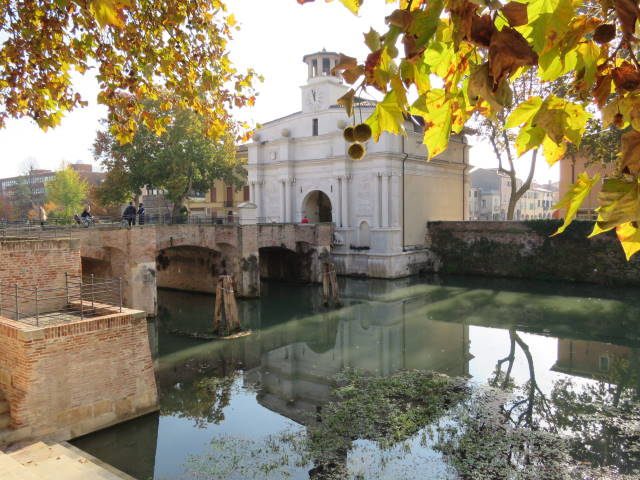
The surroundings of Padova
Castello del Catajo e Castello di San Pelagio (Colli Euganei)
Arquà Petrarca (Colli Euganei)
